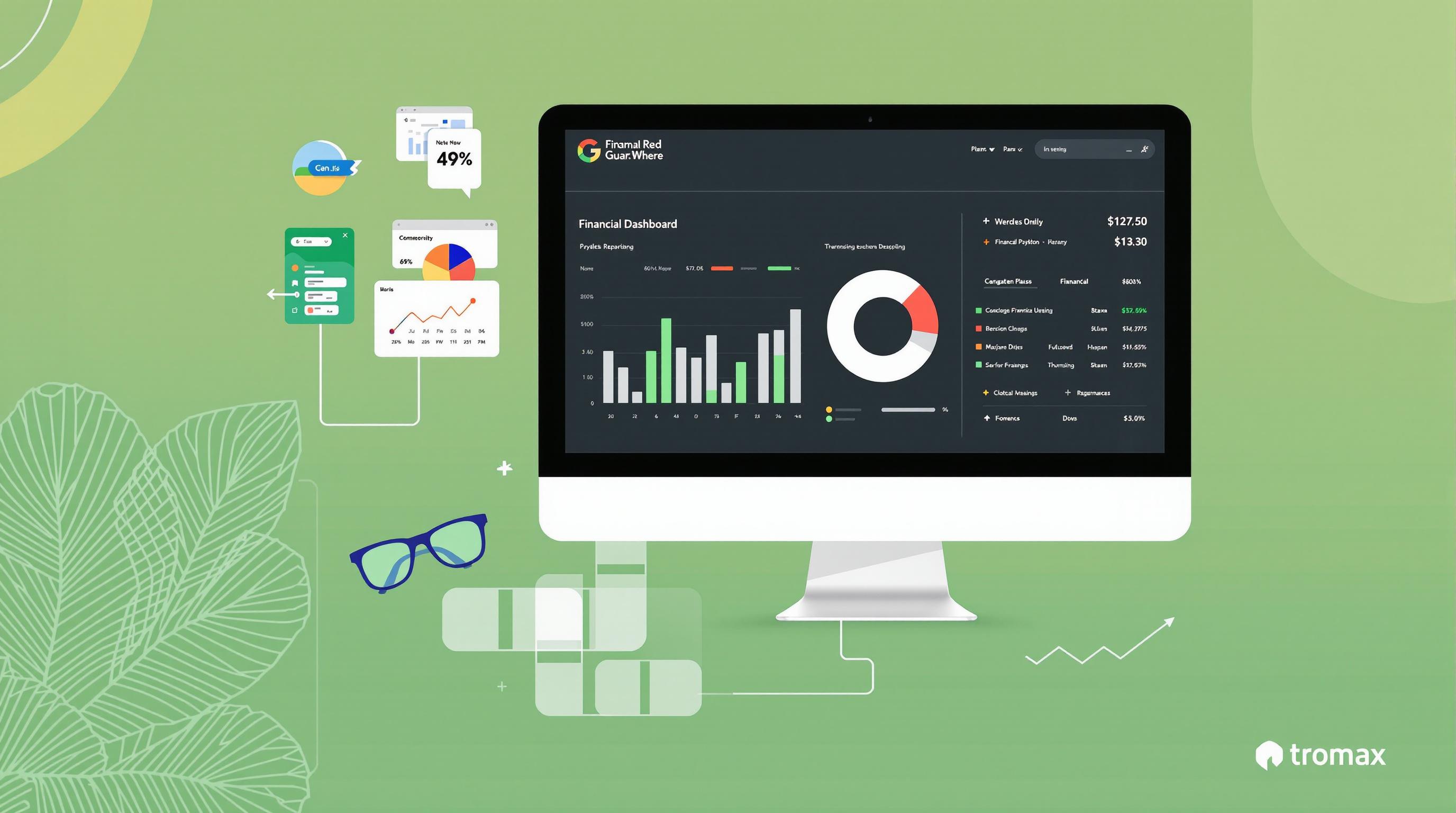Related Articles
- How Mobile Accounting Influences Entrepreneurial Mental Health and Work-Life Balance in Gig Economies
- The Quiet Costs: How Mismanaged Time Data Quietly Undermines Small Business Growth and Decision Making
- Top 5 Trailblazing AI-Powered Financial Reporting Apps Revolutionizing Accuracy and Speed Since 2019
- How Behavioral Economics Shapes Decision-Making in Financial Record Matching and Discrepancy Resolution
- How Subtle Shifts in Supplier Relationships Secretly Affect Your Company's Financial Health and Liquidity Balance
- Top 6 Payroll Solutions Born in the Last Five Years That Are Quietly Taking the Gig Economy by Storm
10 Little-Known Financial Reporting Strategies Boosting Business Valuation and Investor Confidence
10 Little-Known Financial Reporting Strategies Boosting Business Valuation and Investor Confidence
10 Little-Known Financial Reporting Strategies Boosting Business Valuation and Investor Confidence
1. Enhanced Segment Reporting
Enhanced segment reporting involves providing more detailed financial information about individual business divisions or geographic segments. This level of transparency allows investors to better understand the performance drivers within a company and assess risk at a more granular level.
By clearly delineating revenue streams, profit margins, and capital expenditures per segment, companies can demonstrate the robustness of their business model. This clarity often leads to higher investor confidence and can positively influence business valuation.
Organizations implementing this strategy comply with IFRS 8 or ASC 280 standards while going beyond minimum requirements, positioning themselves as more transparent and trustworthy in the eyes of stakeholders.
2. Forward-Looking Financial Disclosures
Traditional financial reporting tends to focus on historical data, but forward-looking financial disclosures provide investors with projections, assumptions, and potential risks related to future performance. This strategic inclusion helps investors make more informed decisions.
Companies employing this approach carefully balance optimism with caution, offering guidance grounded in realistic business scenarios and market trends. This can enhance credibility and boost confidence in management’s plans.
According to the CFA Institute, providing well-substantiated forecasts creates a competitive advantage by reducing information asymmetry between management and investors.
3. Integrated Reporting Combining Financial and Non-Financial Data
Integrated reporting merges financial statements with environmental, social, and governance (ESG) metrics to produce a comprehensive view of company performance. This holistic approach appeals to socially conscious investors and global funds emphasizing sustainability.
This strategy reveals how intangible assets, such as brand equity and customer loyalty, contribute to business value, moving beyond traditional gains and losses. It thereby reframes financial performance in a broader societal context.
The International Integrated Reporting Council (IIRC) promotes this method as a best practice, linking robust governance to improved valuation and investor confidence.
4. Real-Time Financial Dashboards
Many companies now embrace real-time financial dashboards that update key metrics continuously, rather than waiting for quarterly reports. This innovation increases transparency and responsiveness to market conditions.
Investors gain immediate insights into liquidity, debt levels, and operational costs, enabling quicker reactions and stronger trust in management’s tactical ability. This improved communication can reduce volatility in stock prices.
Research from the Harvard Business Review underscores that firms leveraging real-time data reporting achieve higher investor satisfaction and market valuation.
5. Customized Financial Reporting for Investor Segments
Instead of one-size-fits-all reports, customized financial reporting tailors information to different investor categories such as institutional, retail, or ESG-focused funds. This strategy addresses distinct investor interests and priorities effectively.
By delivering relevant financial and strategic details that resonate with various audiences, companies can enhance investor engagement and foster loyalty. It also reduces misinterpretation and increases transparency.
According to EY research, personalized disclosures lead to stronger relationships and a broader investor base, subsequently improving valuation multiples.
6. Leveraging Non-GAAP Measures Transparently
Use of non-GAAP financial measures can offer additional insights by highlighting operational performance excluding one-time charges or non-cash items. When presented transparently and reconciled properly, these measures enrich understanding.
This approach supplements traditional earnings figures, helping investors evaluate core profitability and cash flow generation with greater accuracy. Transparency in defining these metrics is critical to maintaining credibility.
The SEC encourages clear reconciliation disclosures to prevent confusion, and companies following these guidelines tend to experience higher investor trust and improved valuation.
7. Early Adoption of Accounting Standards
Early adoption of upcoming accounting standards demonstrates a company’s proactive compliance culture and readiness for regulatory shifts. This foresight can reassure investors about management’s governance and adaptability.
By adjusting financial reporting ahead of peers, companies mitigate risks associated with sudden changes and reduce uncertainties about future disclosures. It also signals operational sophistication and strategic planning.
Studies show firms that adopt standards like IFRS early often experience a valuation premium and enhanced investor confidence, partly due to perceived transparency and lower regulatory risk.
8. Detailed Cash Flow Reporting and Analysis
Enhanced focus on cash flow reporting provides investors with critical insight into liquidity and operational efficiency. Breaking down cash flows from operating, investing, and financing activities into more detailed categories enhances understanding.
Companies that thoroughly analyze and disclose their cash inflows and outflows reveal financial resilience and healthy capital management practices. This transparency frequently translates into higher trust and better valuation.
The Financial Accounting Standards Board (FASB) highlights that improved cash flow disclosures help reduce investor uncertainty, supporting stronger market confidence and reduced cost of capital.
9. Risk Factor Quantification and Scenario Analysis
Including quantitative risk factor disclosures and scenario analysis allows companies to communicate potential threats and their impact on business valuation more effectively. Investors can then gauge risk-adjusted returns better.
This technique involves modeling various economic conditions or operational disruptions and their anticipated financial consequences. The transparency gained through such simulations supports investor decision-making.
According to PwC, organizations employing scenario-based risk disclosures typically enjoy enhanced credibility and investor confidence due to demonstrated preparedness and thoroughness.
10. Transparent Related-Party Transaction Reporting
Transparent reporting of related-party transactions addresses concerns about conflicts of interest and financial integrity. Clear disclosure helps investors identify any financial arrangements that may affect the company's fairness or risk profile.
By proactively providing detailed explanations and justifications for these transactions, companies can mitigate skepticism and prevent negative valuation impacts caused by perceived governance weaknesses.
The Institute of Internal Auditors notes that transparent related-party reporting is critical for institutional investor trust and often corresponds to higher market valuations and increased shareholder confidence.




